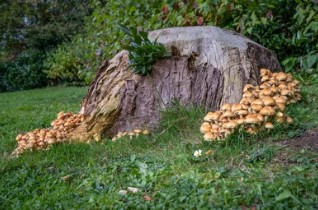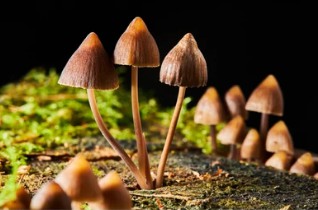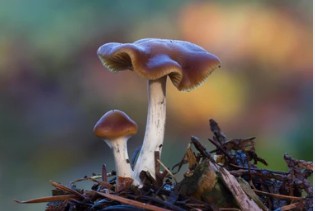When we talk about mushrooms, most people immediately think of them as delicious food. However, not all mushrooms are non-toxic and edible, and every year people are hospitalized because they accidentally eat poisonous mushrooms. These mushrooms contain a neurotoxin that causes neuroleptic effects. Studies have shown that these hallucinogenic toxins are beneficial in the treatment of psychiatric disorders such as depression. Therefore, culture studies of Hypholoma fasciculare will help to provide research directions for the treatment of psychiatric disorders such as depression.
Lifeasible offers tissue culture services for Hypholoma fasciculare. We can perform bulk tissue culture of Hypholoma fasciculare. This will provide you with sufficient material to prepare your research on hallucinogenic mushrooms and speed up your experiments.
What is Hypholoma Fascicula?
Hypholoma fasciculare, also known as the sulfur mushroom or the clumping mushroom, is a common woodland mushroom. It is usually found when there are few other mushrooms around. This small, decaying gill fungus grows in large clumps on stumps, dead roots, or decaying trunks of broad-leaved trees. The 'sulfur mushroom' is bitter and poisonous; eating it causes vomiting, diarrhea, and convulsions. The main toxin is a steroid called fasciculi E. The active ingredient in psychedelic mushrooms, naked cap mushrooms, relieves symptoms such as depression and anxiety in cancer patients.

Our Services
Lifeasible's Hypholoma fasciculare tissue culture service provides scientists with a rich source of raw material to study the application of Hypholoma fasciculare toxin compounds. Our laboratories are well equipped and our technicians are experienced. We can provide a fast and high-quality culture service for the strains you require. In addition, we can offer a culture service for specific fungal strains according to your experimental needs.
The Tissue Culture Process
There are roughly three steps in tissue culture:

Strain collection
Tissue Isolation
Strain Purfication
Species of Strain
We offer both types of hallucinogenic mushroom tissue culture services including but not limited to the following:
|
Name |
Description |
|---|
 Psilocybe semilanceata
Psilocybe semilanceata |
Also known as the magic mushroom.
Habitat: Uncultivated grassland. This mushroom is found in decaying grass roots sap.
Edibility: Highly hallucinogenic and causes gastrointestinal distress.
The species produces at least two hallucinogenic compounds, psilocin, and psilocybin. |
 Psilocybe cyanescens
Psilocybe cyanescens |
Also known as Potent Psilocybe and Blue Ringer.
Habitat: Wood chips and other lignin-rich substrates. |
Applications
Hypholoma fasciculare has been successfully used as an experimental treatment to competitively replace the common fungal disease honeysuckle in conifers from managed conifer forests.
The toxin in Hypholoma fasciculare is used in medicine as a potential drug candidate for the treatment of psychiatric disorders such as depression.
Possible Effects of Accidentally Ingesting Hypholoma fasciculare
- Euphoria
- Hallucinations (visual or auditory)
- Elevated heart rate, blood pressure, and body temperature
- Drowsiness
|
- Muscle weakness
- Mental tension
- Nausea, vomiting, or abdominal discomfort
- Headache
|
- Feeling of panic
- Paranoia
- Psychosis
|
Contact Us
If you are interested in our services, please contact us for a more detailed description of our services.
For research or industrial raw materials, not for personal medical use!




 Psilocybe semilanceata
Psilocybe semilanceata Psilocybe cyanescens
Psilocybe cyanescens